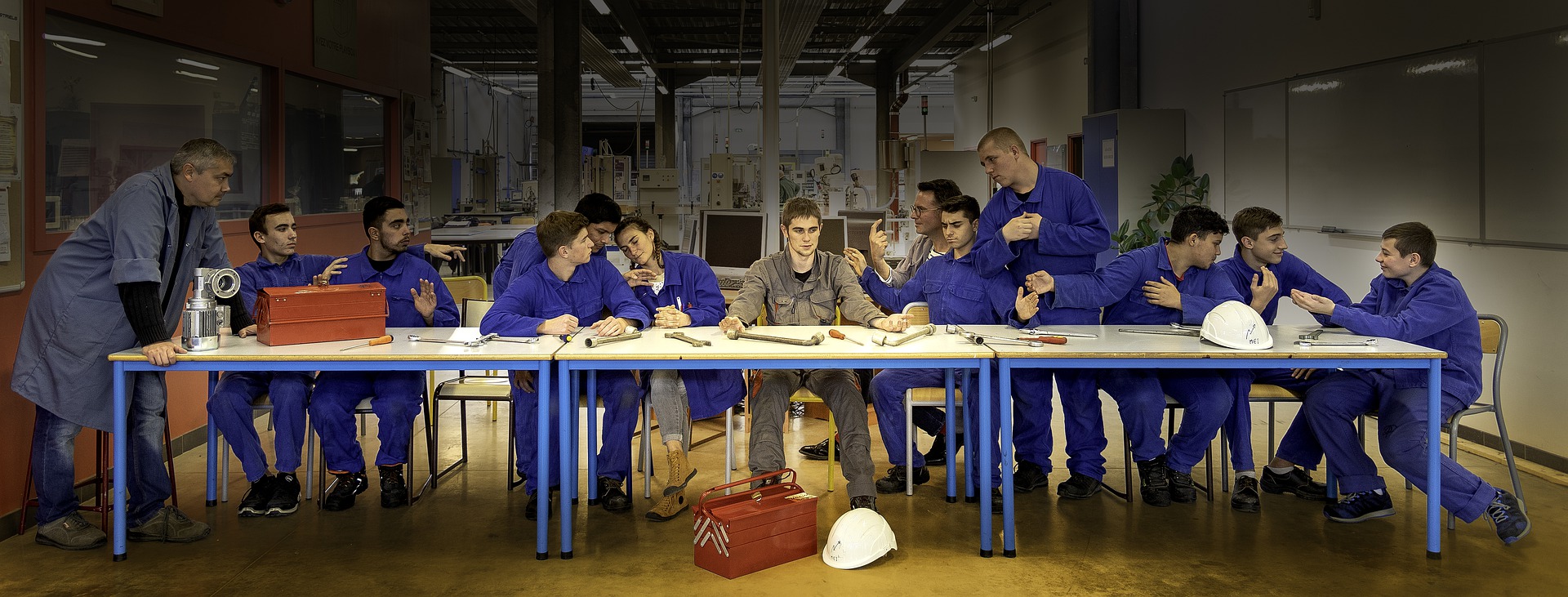
In my previous column, I wrote about the Bullet Journal method. What’s interesting about this method is the different perspective it has compared To Do lists: no endless lists, where more is added than can ever be crossed off, but short daily lists that emphasize living intentionally and in which To Do’s that are not completed are reconsidered each day in view of the contribution they make to the goals you set for your life.
Last week, I stumbled upon an article last week via Linkedin that offers an even more inspiring perspective on To Do lists: that of the perspective of Leonardo da Vinci (1452-1519). Da Vinci is number one on my list of historical superheroes (I wrote this column about him for Innovation Origin a while back), so it’s not surprising that this LinkedIn post caught my attention. The To Do list that Da Vinci jotted down in one of his famous notebooks included: ‘sending a reminder to Maestro Giovanni Francese about measuring the sun, finding a master of hydraulics so I can learn how to repair things the Lombard way, and drawing Milan.’ Brilliant!
Now that is a To Do list: learning, discovering and inventing as central themes on the To Do list instead of running errands, rescheduling a meeting or calling your accountant. Our 21st-century To Do lists include what we literally intend to do rather than what we want to discover. When the emphasis shifts to discovery, the overall To Do list suddenly becomes a lot more exciting. Da Vinci’s list oozes curiosity and creativity.
More stress and less positive feelings
Would lists drawn up in the Da Vinci style make you feel differently about the day than the traditional To Do lists of the 21st century? Wondering if this question had ever been researched before, I decided to scour the scientific databases. And sure enough, a few years ago a study that compared the use of a mental imagination technique with the use of To Do lists appeared in Current Psychology. 214 students at San Francisco State University kept either To Do lists or used the imagination technique (the Mental Imagery method) for two weeks. At the end of the exercise, distinct differences became apparent. The students who started using the To Do method became very task-oriented, but it did not increase their sense of well-being. In fact, they reported more stress and less positive feelings than the students who used the Mental Imagery method.
That had a lot to do with the fact that it’s very unsatisfying when at the end of the day you haven’t managed to complete all of your planned tasks. This causes more and more stress as the day goes on because you would rather avoid that unsatisfying feeling. The researchers argue that where the To Do method puts much more emphasis on what needs to be done, the Mental Imagery method prepares and motivates you mentally to actually do those things.
The 8 steps of the Mental Imagery method
| 1. | Goal: determine a set of goals which allow you to feel high levels of intrinsic motivation. |
| 2. | Relax: a short relaxation exercise. |
| 3. | Frame: imagine sitting in your chair at the end of the day and looking back on the day with good feelings |
| 4. | Outcomes: imagine that you have achieved your most important goals and name them out loud |
| 5. | Positivity: let yourself feel positive feelings when you imagine that you have achieved your most important goals |
| 6. | Vivid: make your imagining of that more vivid in your mind by adding more color, positive words, or clarity |
| 7. | Breathing: breathe in and out deeply, confirming the envisioned image in your mind and giving yourself the energy to make that image a reality |
| 8. | Commitment: tell yourself that it will be a great day and that you feel the commitment to accomplish your goals |
(Burke et al, 2014)
Of course, the Mental Imagery method is not completely the same as the Da Vinci style, but the similarities are considerable: put the emphasis on what you want to learn, discover or accomplish, and do that out of passion and intrinsic motivation, rather than focusing on tasks and chores. It is my firm belief that you cannot start early enough with this.
Teach children from an early age that they should follow their own sense of curiosity and that they have the ability to make something fantastic out of their day. Don’t make schools a place where you have to complete all your school assignments, but rather where you can initiate kick-ass awesome things, learn the coolest things (like the dimensions of the sun, if, like Leonardo da Vinci, you’re interested in that) and that might be important. Make every elementary school an incubator for young Da Vinci’s!
About this column
In a weekly column, alternately written by Eveline van Zeeland, Eugene Franken, Helen Kardan, Katleen Gabriels, Carina Weijma, Bernd Maier-Leppla and Colinda de Beer, Innovation Origins tries to find out what the future will look like. These columnists, occasionally supplemented by guest bloggers, are all working on solutions in their own way on the problems of our time. So that tomorrow will be good. Here are all the previous articles.








